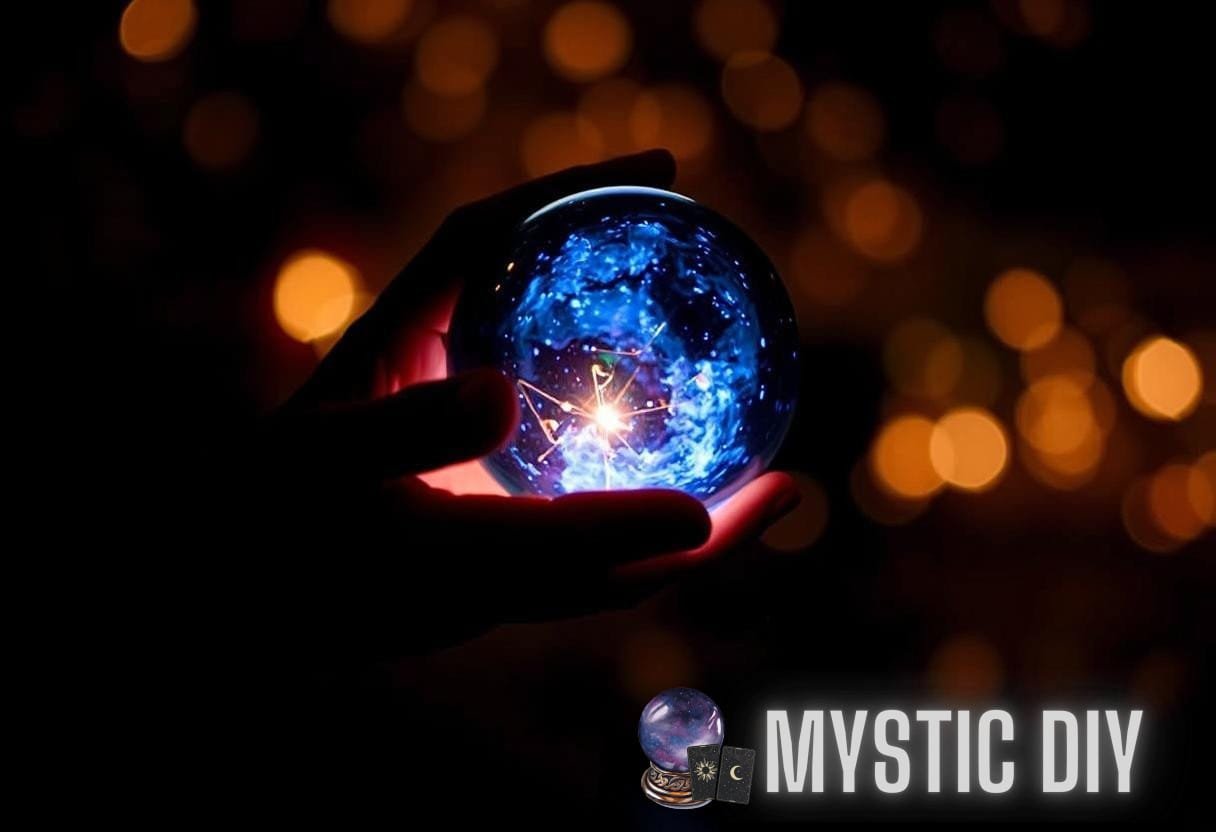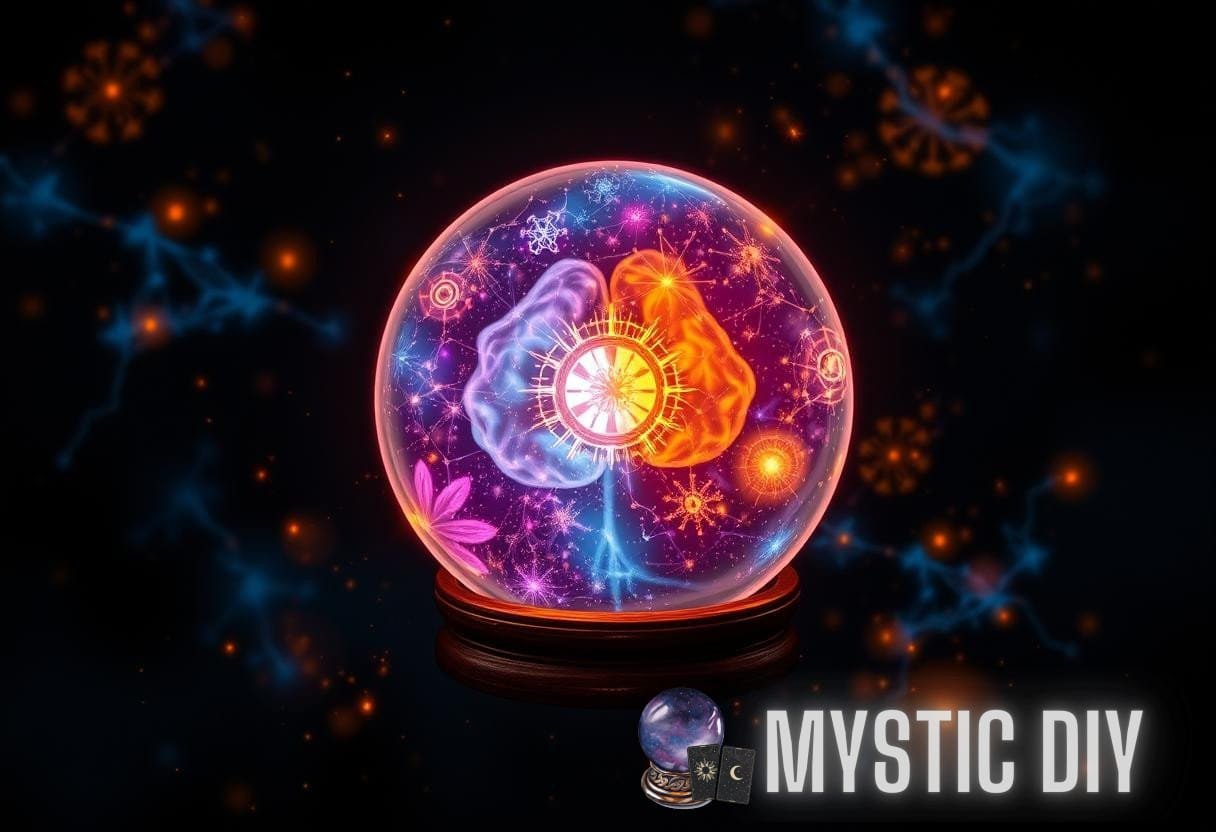Illuminating the Mind: The Cognitive Impact of Crystal Ball Gazing on Intuitive Decision-Making
Throughout history, the art of divination has captivated the human psyche, intertwining mystical practices with the quest for knowledge and understanding. Among these practices, crystal ball gazing—or scrying—is often cited as a potent method for enhancing intuitive decision-making.
The Psychology of Crystal Ball Gazing
Understanding the psychological underpinnings of cognitive crystal gazing requires delving into how human beings engage with symbols and intuition. Psychologists argue that gazing into a crystal ball serves as a catalyst for introspection and mental projection.
The Role of Symbolism
Symbols are powerful tools for human cognition. The crystal ball itself acts as a focal point, a vessel that reflects both external and internal worlds. It enables individuals to create mental imagery that can align their subconscious with conscious thoughts. Thus, when someone engages in crystal ball gazing, they may experience enhanced focus and clarity, allowing them to unravel complex dilemmas.
Intuition as a Decision-Making Tool
Intuition is often described as ‘knowing without knowing why.’ This non-linear processing can be crucial in decision-making. A study published in the Journal of Business Research found that intuitive decision-making leans heavily on experiential knowledge and pattern recognition—elements that can be activated during the practice of cognitive crystal gazing.
Neurological Insights into Crystal Gazing
With advancements in neuroscience, researchers have begun examining how mystical practices like crystal ball gazing can modulate neural pathways. Cognitive engagement in such activities may stimulate areas of the brain associated with creativity, problem-solving, and emotional processing.
Brain Activation and Flow States
Engaging in cognitive crystal gazing can induce what is known as a “flow state”—a psychological state where a person is fully immersed in an activity. According to a Psychology Today article, during this state, brain regions responsible for self-criticism and doubt become less active, while those related to creativity and insight come to the forefront.
Case Study: Neuroimaging Research
In one neuroimaging study, participants engaged in crystal ball gazing were monitored for changes in brain activity. Results showed an increase in gamma brainwave activity, which is associated with higher mental activity, including perception, problem-solving, and memory. This indicates that there may be a profound cognitive shift occurring during cognitive crystal gazing that enhances decision-making abilities.
Cultural Perspectives on Crystal Gazing
The cultural context of crystal ball gazing enriches our understanding of its cognitive effects. Practiced across various civilizations—from ancient Greeks to modern-day psychics—this art has been a means of interpreting life’s uncertainties.
Historical Context
Historically, crystal gazing was considered a sacred practice. In ancient Egypt, priests utilized polished crystal to foresee future events. In the Chinese tradition, the use of crystal balls has been linked to healing and meditation. Such rituals often promote a deep connection with the self, thereby enhancing intuitive thinking.
Modern Interpretations
Today, crystal ball gazing is embraced not only as a mystical practice but also as a tool for mindfulness and self-reflection. Many practitioners and enthusiasts claim that cognitive crystal gazing allows them to tap into their subconscious, revealing insights that may lead to better decision-making.
- Mindfulness: The act can serve as a meditative exercise, promoting a sense of peace and presence.
- Increased Insight: Many users report clearer insights into their lives and decisions derived from the process.
- Emotional Clarity: Participants often feel more in tune with their emotional states post-practice.

Practical Benefits of Cognitive Crystal Gazing
The cognitive benefits of crystal ball gazing are multifaceted, touching on various aspects of personal development and decision-making processes. While empirical studies may be limited, anecdotal evidence and personal testimonials provide a compelling narrative regarding its advantages.
Enhanced Clarity in Decision-Making
Practitioners often report increased clarity when faced with dilemmas. By using a crystal ball, individuals engage in a dialogue with their subconscious, uncovering latent thoughts and feelings. This dialogue can significantly improve their ability to make informed decisions.
Stress Reduction and Emotional Regulation
Engaging in cognitive crystal gazing may also help mitigate stress. The meditative nature of the practice can aid individuals in escaping the pressures of daily life, resulting in improved emotional regulation. A calmer mind is more adept at processing information and analyzing options, leading to more balanced decisions.
Case Studies: Real-Life Applications
Numerous individuals have found practical applications for crystal ball gazing in their lives. For example, high-stakes professionals such as business executives cite the use of divination tools for enhanced strategic planning and intuitive leadership. By integrating cognitive crystal gazing into their decision-making processes, they report more effective team dynamics and innovative problem-solving approaches.
The Future of Cognitive Crystal Gazing
As society continues to evolve, the perception of cognitive crystal gazing may shift further into the mainstream. The rising interest in holistic approaches to mental health and wellness could pave the way for more individuals to embrace this practice as part of their cognitive repertoire.
Potential for Integration in Modern Therapies
Counselors and psychologists might explore incorporating elements of crystal gazing into therapeutic sessions, leveraging its meditative aspects to foster insight and healing. Emerging practices may draw from both traditional psychological methods and mystical approaches to create an integrated model of decision-making support.
The Science-Backed Approach
As research progresses, more empirical studies may emerge to investigate the cognitive effects of crystal ball gazing. This growing body of evidence may lend credence to the practice, establishing its place within the scientific community. A focus on controlled studies measuring cognitive outcomes will be essential in validating the effectiveness of cognitive crystal gazing.
Summary of Key Points
In exploring the cognitive impact of crystal ball gazing on intuitive decision-making, several key themes emerge:
- Cognitive Activation: Engaging with crystal balls activates neural pathways that facilitate intuitive thought.
- Holistic Benefits: Practitioners often experience enhanced clarity, stress reduction, and emotional regulation.
- Cultural Richness: The historical significance and modern applications of crystal gazing enrich its value in decision-making.
The exploration of cognitive crystal gazing reveals its potential to illuminate the mind’s inner workings—a tool not only for divination but a bridge to deeper understanding and superior decision-making. As society continues to embrace varied cognitive methodologies, crystal ball gazing stands as a testament to the complex interplay between intuition, perception, and knowledge.
Engaging with the practice can open new realms of understanding and insight that enrich personal and professional lives alike.



